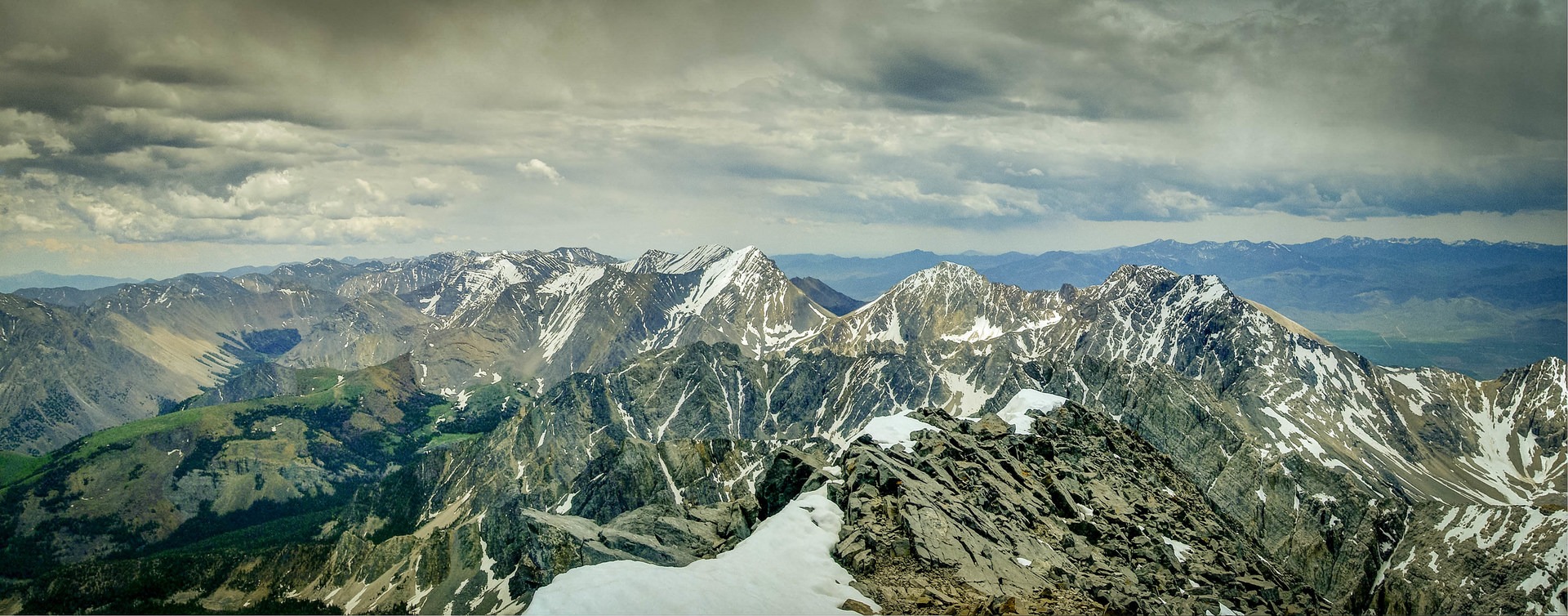At 12,662 feet, Borah Peak is Idaho's highest mountain. Located in Idaho's Lost River Range, this mountain is quite remote, but because of its status as a state high point it sees a good deal of traffic during the summer months, especially on weekends. Borah would be a fantastic climb even if it wasn't the state's highest peak, however. The main route follows the southwest ridge and gains well over 5,000 feet in around 3.5 miles to the summit. In short, it is steep!
The main route's most famous feature is the knife-edge ridge about two-thirds of the way to the top called Chicken Out Ridge. Visitors unaccustomed or unprepared for the exposure sometimes choose to turn around here, which is how the ridge is named. Getting across COR is certainly quite airy, and a 20-foot downclimb is required at the end of the ridge. In normal snow years the gully at the base of the downclimb is often choked with snow until late in the year, requiring climbers to cross a snow bridge to the rock of the upper mountain. When the snow bridge is in place, an ice axe and crampons are advised.
There are a number of alternate routes up the mountain, the most well known of which is the north face. This is one of Idaho's premier steep rock and ice routes. It also happens to begin in the basin that held the state's last active glacier.
While Borah is accessible to most during the summer months, winter turns the mountain into an expedition that should only be attempted by experienced mountaineers, even via the standard route. There have been three fatalities on the mountain due to avalanches.
One of the most unique features of Borah is the massive earthquake fault scarp that is clearly visible along the road to the trailhead. In 1983, a 6.9-magnitude earthquake shook the area and actually caused Borah Peak to rise 7 feet in elevation to it's current elevation.



























Comments
Sign In and share them.